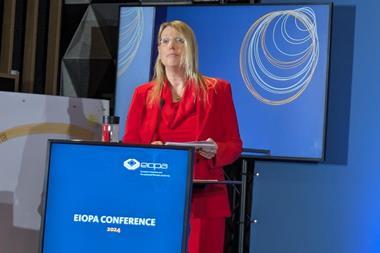UK - Proposals to phase out the higher rate of pensions tax relief could cost employers, pension schemes and providers £1.05bn (€1.27bn), while the cost to employees could be a further £1.38bn, Standard Life has claimed.
The plans to gradually remove higher rate tax relief on pensions from April 2011 was outlined by former Chancellor of the Exchequer Alistair Darling in his Budget speech in April 2009. (See earlier IPE article: UK Budget cuts higher rate tax relief)
Figures from the government’s impact assessment in February 2010 suggested the one-off compliance cost to the pensions industry would be approximately £345m, with an ongoing annual cost of £130m.
But Standard Life has argued these figures underestimate the impact by a factor of seven and instead claimed the “true cost” of implementation was nearer £2.5bn, while ongoing annual compliance costs were estimated at £435m.
It attributed the differing figures to the fact the government failed to account for other costs such as individual advice to employees and employers, as well as the extra cost to providers of building alternative products.
Standard Life’s calculations suggested the cost to each employer of getting to grips with the new rules, providing information, taking advice and changing contracts was approximately £16,500, so across 50,000 employers, this could total £525m.
Meanwhile, pension schemes and providers will also have to take advice and make certain changes such as payroll and pension systems and scheme literature, all of which could total £525.3m.
Employees could face initial costs of £1.38bn if 450,000 affected workers have to seek financial advice and suffer extra self-assessment related costs, while implementation costs for HMRC are estimated at £75m.
Standard Life claimed ongoing costs for employers, such as communication and payroll system changes, could be £80m per year, while employees may have to pay £273m a year, and pension schemes and providers could see an annual bill of £52.6m.
John Lawson, head of pensions policy at Standard Life, said: “This is inefficiency gone mad - pension savers, their employers and their pension schemes will have to spend £2.5bn so HM Treasury can collect £3.6bn of tax.
“Given the burdens faced by people as a result of the recession, adding further unnecessary bureaucratic cost adds insult to injury.
“The problem stems from the mind-boggling complexity of these rules.”
He argued a “simple reduction” to the existing annual allowance would cost only a fraction of this to implement.
He calculated that the implementation of a reduction in the annual allowance would be £459m, while ongoing costs would be £118m.
Ahead of the emergency Budget on 22 June 2010, Hargreaves Lansdown called for a £50,000 annual cap on pension contributions instead of the “torturously complex” pension tax due to arrive next April.
The company claimed this cap would raise approximately the same amount for the Treasury as the pension tax and limit the tax relief available to high earners.
It would also give government time to examine the design of the pension system as a whole in a “considered manner”.
Tom McPhail, head of pensions research at Hargreaves Lansdown, said: “Capping pension contributions at £50,000 is a much simpler way to achieve the same goal that has the support of the whole pensions industry.”
The call for a contribution cap as an alternative to the tax relief changes follows a survey by PricewaterhouseCoopers earlier this week that showed 74% of respondents were worried about the potential administration burden of the new tax regime. (See earlier IPE article: UK roundup: West Sussex, Coca-Cola, Ernst & Young, Tax relief)











No comments yet